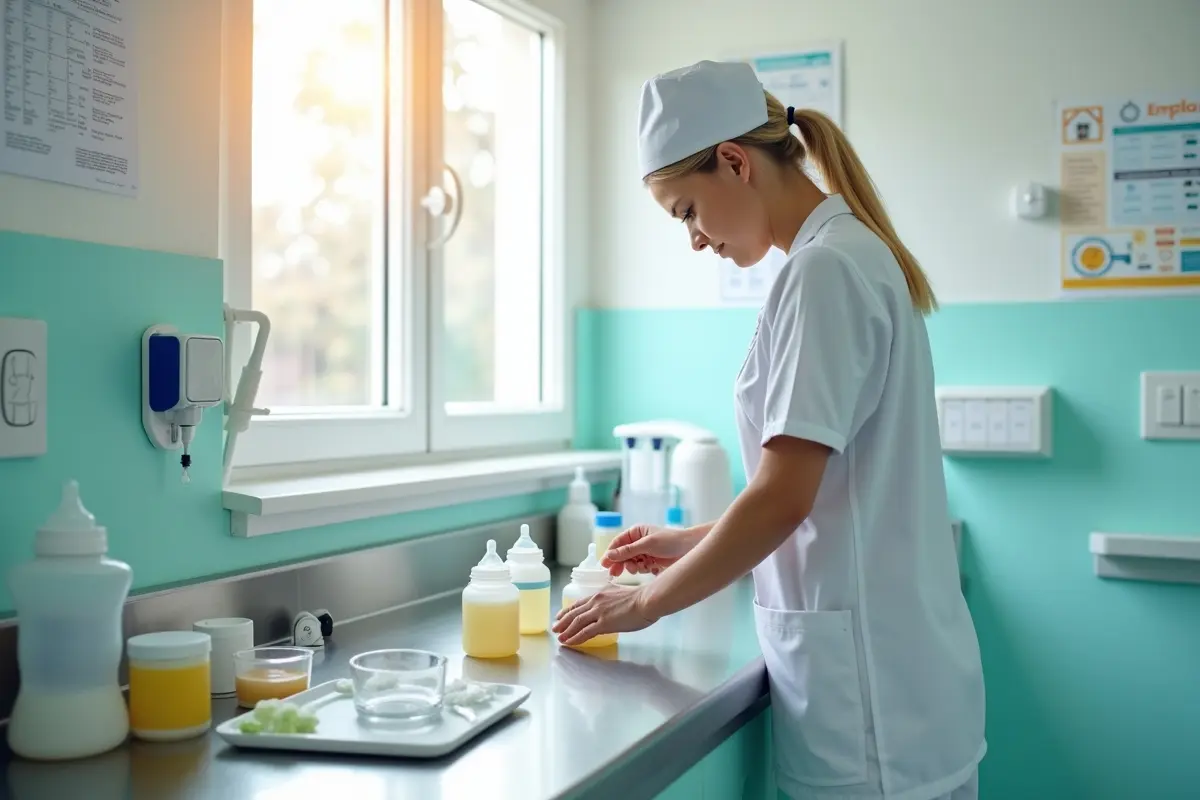Establishing safe environments for infant feeding in healthcare settings is critical for protecting the health of newborns and reducing the risk of infections. Newborns, especially those in neonatal intensive care units or born prematurely, are uniquely vulnerable to adverse outcomes from inadequate hygiene and improper feeding methods.
Hospitals and healthcare facilities must prioritize strategies that support safe and standardized infant feeding practices from the outset, ensuring that every newborn—regardless of health status—is given the best possible start in life.
Simple yet effective procedures, such as appropriate hand hygiene for caregivers and rigorous cleaning protocols for feeding equipment, can significantly minimize the spread of infections, which can have lasting effects on an infant’s long-term development. Formal training programs, such as those for Infant Formula Technician, are increasingly important as healthcare environments strive to maintain the highest feeding standards.
According to the World Health Organization, poor feeding practices in healthcare settings—particularly in low-resource environments—can contribute to high rates of healthcare-associated infections. These infections are preventable with the implementation of proper feeding protocols, education, and robust hygiene practices among staff and caregivers.
In addition to the risk of infection, infants require not only safe and clean feeding but also nutritional adequacy, which is fundamental for brain and body development in these early months. For staff, staying updated on the latest safety recommendations empowers them to deliver optimal care in accordance with evolving healthcare guidelines and research.
Implementing Evidence-Based Policies
Adopting evidence-based policies is the foundation for safe infant feeding in healthcare settings. The “Ten Steps to Successful Breastfeeding,” developed by the World Health Organization and UNICEF, remains a global gold standard. These steps are not only designed to protect, promote, and support breastfeeding but also serve as a framework for educating staff and caregivers in hygienic bottle preparation, breast milk handling, and feeding best practices.
Hospitals that are designated Baby-Friendly, having implemented these steps, report fewer cases of infections and infant illnesses compared to non-designated hospitals. Establishing written policies that are regularly reviewed and updated to reflect current research is essential. Policies must address issues like exclusive breastfeeding support, formula preparation safety, donor human milk protocols, and staff training requirements.
Training Healthcare Staff
The effectiveness of policies and protocols depends heavily on the staff’s knowledge, competence, and ongoing training. All personnel involved in feeding, including nurses, lactation consultants, and formula technicians, need training on hygiene, infection prevention, safe handling of breast milk and formula, and communication strategies for working with families.
Training must be continuous and data-driven, ensuring readiness for both routine care and emergencies, such as pandemics or natural disasters. Simulation-based training, peer learning, and annual competency validation help prevent lapses in feeding safety. Institutions with structured, ongoing staff education programs have significantly lower rates of healthcare-associated infant infections and feeding-related complications.
Furthermore, integrating culturally sensitive and family-centered training ensures that staff can effectively engage with caregivers from diverse backgrounds, thereby enhancing trust and adherence to recommended feeding practices.
Designing Family-Friendly Spaces
Creating welcoming, private, and clean spaces for infant feeding supports both caregivers and infants, reducing stress and fostering adherence to feeding recommendations. The Centers for Disease Control and Prevention (CDC) advises healthcare facilities to dedicate rooms or zones for breastfeeding and bottle preparation, ensuring privacy, accessibility, and access to handwashing facilities. This not only helps the infant feel calm and safe but also allows parents or caregivers to focus fully on the feeding experience.
In emergency settings, family-friendly feeding areas become even more important. Dedicated spaces in hospitals and shelters provide a protective environment, decreasing the likelihood of cross-contamination and promoting consistency in feeding for very young children. Well-designed spaces empower families, improve satisfaction, and are associated with better health outcomes for infants.
Monitoring and Evaluating Practices
Successful implementation of safe feeding environments requires ongoing monitoring and evaluation. Regular audits of feeding practices, equipment cleanliness, staff adherence to hand hygiene, and parent feedback reveal critical data points for quality improvement. Adopting standardized evaluation tools—such as the Baby-Friendly Hospital Initiative Monitoring Manual—ensures consistency and accountability across all units.
Facilities can leverage performance metrics to guide staff education efforts, policy revisions, and environmental improvements. Transparent reporting and open channels for staff and caregiver feedback foster a safety culture, empowering teams to address concerns rapidly and celebrate successes in infant care.
Conclusion
Establishing a safe infant feeding environment in healthcare facilities is not a single action, but rather a multifaceted commitment that involves implementing policies, providing training, incorporating thoughtful design, and maintaining diligent monitoring.
By embracing evidence-based protocols, investing in staff competency, and designing family-supportive environments, healthcare leaders can dramatically improve infant health outcomes. These efforts not only safeguard infants during critical early feeding periods but also contribute to nurturing healthier families and communities for the future.




